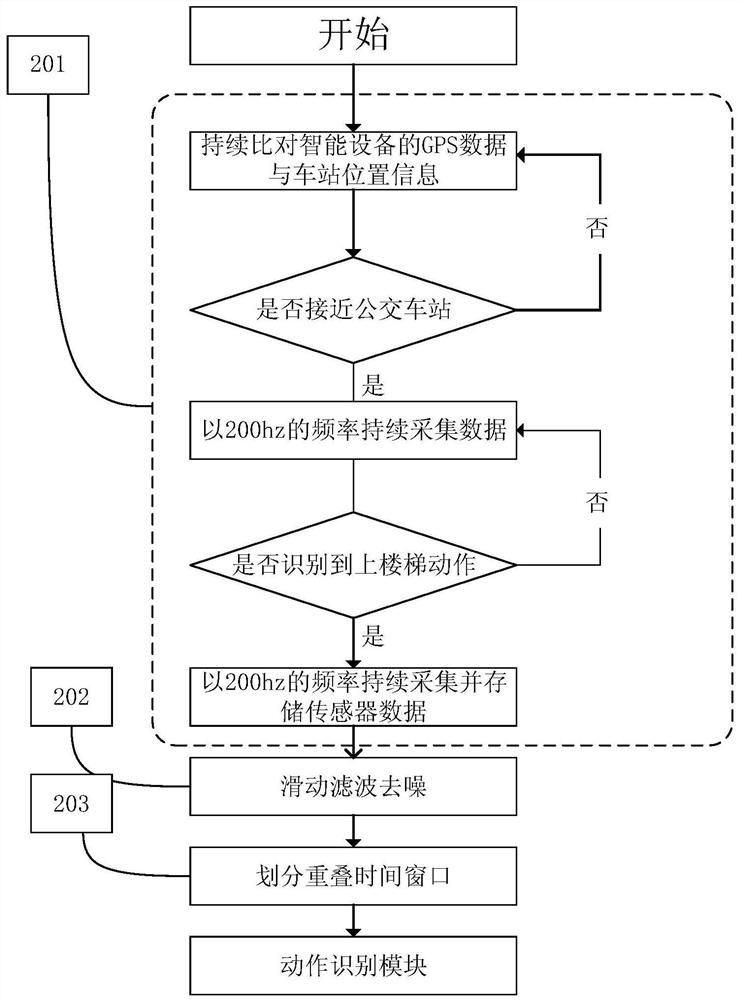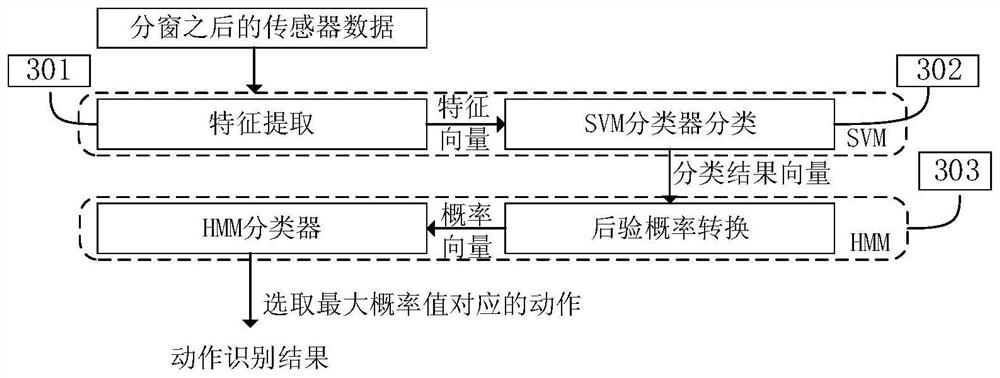A method for estimating bus congestion based on mobile phone sensors
A technology of crowding and sensors, applied in the input/output process of data processing, instruments, forecasting, etc., can solve the problems of too many or too few people statistics, impracticality, and inability to guarantee the clarity of image data, etc.
- Summary
- Abstract
- Description
- Claims
- Application Information
AI Technical Summary
Problems solved by technology
Method used
Image
Examples
Embodiment Construction
[0037] The bus congestion degree estimation based on group intelligence and hierarchical learning proposed by the present invention is a high-precision and stable scheme for estimating the congestion degree on a certain bus. figure 1 Showed the overall workflow of the present invention, figure 2 It is the workflow of data acquisition and preprocessing, image 3 is the workflow of the action recognition process for the sensor data of each passenger participating in the perception, Figure 4 is the workflow of gait recognition after the action recognition process, Figure 5 is the walking model diagram of the step estimation process in gait recognition, Figure 6 is the workflow of the passive sensing process.
[0038] In order to make the object, technical solution and beneficial effects of the present invention clearer, the present invention will be described in detail below in conjunction with the accompanying drawings.
[0039] One, at first introduce the brief method f...
PUM
 Login to View More
Login to View More Abstract
Description
Claims
Application Information
 Login to View More
Login to View More - R&D
- Intellectual Property
- Life Sciences
- Materials
- Tech Scout
- Unparalleled Data Quality
- Higher Quality Content
- 60% Fewer Hallucinations
Browse by: Latest US Patents, China's latest patents, Technical Efficacy Thesaurus, Application Domain, Technology Topic, Popular Technical Reports.
© 2025 PatSnap. All rights reserved.Legal|Privacy policy|Modern Slavery Act Transparency Statement|Sitemap|About US| Contact US: help@patsnap.com



